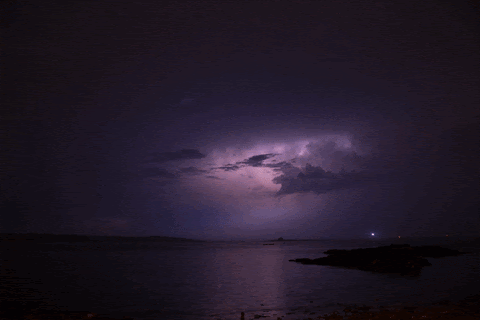Thunder Storms
Thunder and lighting have astounded humans for ages. Ranging from the ancient Greeks who shared stories of Zeus using lightning as a weapon amongst the gods to Scandinavian mythology depicting Thor with his mighty hammer, wielding lightning against his demon foes. Even Santa Claus got into the lore of the thunderstorms naming two of his reindeer after the natural phenomenon: Donner(for being loud like thunder) and Blitzen (for being fast like a lightning bolt).
It’s an event that is fascinating and mystical in equal measure, so much so that it has inspired many stories to explain the mechanics of our natural world.
But what actually causes thunderstorms?
We’re so glad you asked.
An air column that is warm and moist will form to be the fuel for the thunderstorm. It rises quickly to create an updraft.
It will continue to rise until it reaches temperatures that are no longer warmer than the air around it. This causes the column to spread out into flat anvil-like clouds.
Once the weight of the rain within the cloud becomes too heavy, rain spills over on the outsides of the updraft.
The falling rain creates a downdraft by dragging cool air downward with it. A thunderstorm is cut off from its fuel once the downdraft of cool air stops the flow of the updraft of warm air.
5. Now we have a storm! Next is lightning, because lightning causes thunder. Most lightning starts within the cloud, in which an energy channel heats the air, and the pressure pushes it outward in a flash. *Fun fact: lighting is approximately 50,000 degrees Fahrenheit- that’s hotter than the surface of the sun!
Why do I see lightning before I hear the thunder?
Because light is about a million times faster than sound. During a thunderstorm, you can use sound to measure how far away the storm is. What you do is after seeing a flash of lightning, count the seconds until you hear thunder. Take that number of seconds and divide it by 5 to calculate the number of miles away the lightning took place, or divide it by 3 to calculate the number of kilometres. It can be a neat experiment to do during a storm.
A thunderstorm is something you either dread due to its booming and clashing or adore due to its rarity and spectral; no matter who you are, you have an opinion about thunderstorms. Hopefully, with this brief overview of what's happening, it can be a little less scary and will be intrigued by what many once thought to be the act of the gods.



